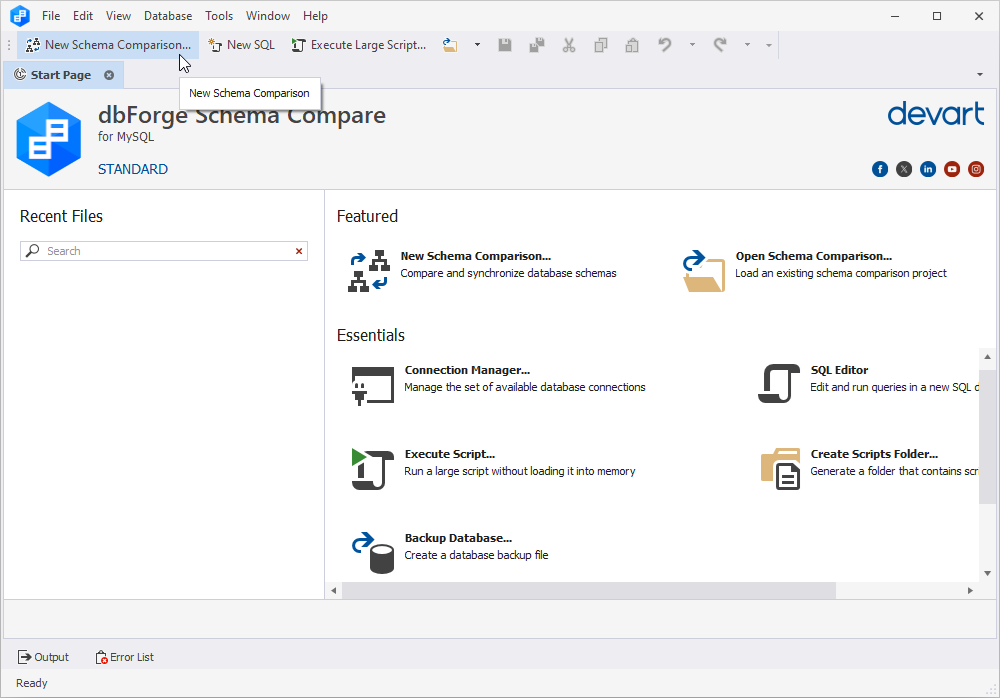Select data sources for comparison
dbForge Schema Compare for MySQL gives you a perfect opportunity to compare and synchronize schemas with many useful features. To initiate a new comparison project, you must define two data sources for comparison and specify how to connect to each of them.
To select Source and Target connections and specify the names of databases to be compared:
1. Click New Schema Comparison.

2. In the New Schema Comparison wizard that opens, specify the type of the Source and Target, connection, and the names of the databases to be compared.

Select data sources
On the Source and Target tab of the New Schema Comparison wizard, select the two data sources you want to compare. You need to specify a source and a target.
Note
The Source is the data source that will not change. The Target is the data source that will change.
To swap Source and Target settings, click  .
.
The following types of data sources can be compared:
You can select a data source from a Type drop-down list.

Note
You can compare any combination of data source types in your project.
Select a database
1. In the drop-down list under Source or Target, select Database.
2. In the Connection box, select the name of the MySQL.
Note
If you need to use a new connection:
1. In the Connection box, select < Manage > from the drop-down list.
2. In the Connection Manager window, click New.
3. In the Database Connection Properties window, specify the details of the connection you want to add and click Connect. For more information about database connections, refer to How to connect to MySQL.
If you set up a connection in one of the following tools, it will be automatically added to other dbForge MySQL tools:
- dbForge Schema Compare for MySQL
- dbForge Data Compare for MySQL
- dbForge Data Generator for MySQL
- dbForge Query Builder for MySQL
- dbForge Documenter for MySQL
You can migrate connections and assigned categories between dbForge MySQL tools (for example, from dbForge Data Compare for MySQL, to dbForge Data Generator for MySQL). To do that, you should create an export settings file with the help of Import and Export Settings Wizard in one tool and then import it in another dbForge MySQL tool. For more information, see Import and export settings.
3. Under Database, select a database to be compared from a drop-down list.
To refresh the database list, click Refresh on top of the list.
Select a scripts folder
1. Under Source or Target, select Scripts Folder from the drop-down list.
2. In the Database scripts folder box, select the name of the scripts folder or click Browse to browse to the required folder.

Note
If you need to create a new scripts folder:
1. In the Database scripts folder box, click
New.
2. Then, in the Create Scripts Folder or Snapshot dialog that appears, set the scripts folder parameters and click Create.

